A discussion of the term ‘Arabia” and what it might have meant to Greek and Roman audiences
Throughout history, the Arabian Peninsula has been traditionally called ‘Arabia.’ This was particularly true during the Persian, Greek, Roman, and Byzantine eras. Occasionally Roman historians would refer to Nabataean rulers as “King of the Arabs.” The use of this term has often proven confusing to modern readers whose definition of ‘Arab’ is colored by recent history.
In the minds of many today, the Arabs are identified as the people who speak the Arabic language. This linguistic approach has several problems. The foremost problem is that today many people in the Middle East speak Arabic because it was forced upon them by the Muslim armies that conquered the Middle East in the late 7th century. Many peoples of the Middle East have non-Arab ethnic backgrounds, but they speak Arabic as their first or second language because it has been forced upon them by the state. There are still a number of minorities in the Middle East who use Arabic as a trade language but continue to use their ethnic languages in their homes: Chaldaeans, Armenians, Assyrians, Adygey (Circassians), Turkomen, Gypsies, Persians, Kurds, etc. Each of these groups strongly oppose being labeled as ‘Arabs,’ even though they now speak Arabic, often as their first language.
Thus, it is important to consider not only linguistics, but also the historical and ethnic background of the peoples of the Middle East to find the true Arabs–especially those who would have been referred to as Arabs by Greek and Roman historians, and the lands that have been classified as ‘Arabia.’
During the time of the Nabataeans, there were only a few people who spoke Arabic. This language is often called ‘Old Arabic,’ which varied from location to location. Spoken Arabic dialects varied considerably and written forms of early Arabic differ dramatically. Entirely different scripts were used in southern Arabia, and so historians today often refuse to classify all these languages under the collective heading ‘Arabic.’
To understand what ancient historians considered when they used the term ‘Arab,’ we will look at a number of terms that were applied to this area of the Middle East.
Ancient Arabia
The term Arabia comes from Old-Persian, pronounced ‘Arab’ya.’ This was the Persian name for the country to the west and south of Mesopotamia. As one reads ancient literature, three main zones can be discerned: the southern towns and kingdoms bordering on the Indian Ocean (modern Yemen and Oman), the nomadic interior (Saudi Arabia), and a northwestern part (Jordan and parts of Syria).
The Latin names of these three zones are:
- Arabia Felix (Happy Arabia),
- Arabia Deserta (Desert Arabia)
- Arabia Petraea (Arabia ruled from Petra).
Arabia Deserta
The nomadic tribes from Arabia Deserta frequently invaded the surrounding countries such as Arabia Felix and Mesopotamia, where they sometimes managed to settle. In Akkadian, these people were called the Aribi. Hardly anything about these isolated people without history is known, although it seems certain that they became camel riders in the tenth or ninth century BC.
By 250 BC, various Arabian tribes began moving into the Levant. There is record of the tribes of Qedar and the Nabatu making inroads into Edomite, Moabite, and Hebrew territories. In the Parthian and Roman period, several Arabian dynasties ruled towns in what is now Syria and Iraq: Bosra, Palmyra, Emesa, Edessa, Hatra, Characene, and Gerrha.
While it is common for people today to think of all of the inhabitants of the Arabian Peninsula as ‘Arabs,’ the ancient historians often referred to these people by their direct tribal name. This is very important in discovering who the real Arabs were.
Arabia Petraea
These Arabs of Arabia Petrea lived between Egypt and Mesopotamia. Eventually they left their nomadic way of life and built several towns. The principal people in this area were the Nabataeans: Petra was their first capital, and later their capital was Bosra.
The oldest reference to these Arabs can be found in the biblical book Genesis, where Arabian merchants buy and sell Jacob’s son Joseph. The Assyrian king Salmanasser’s account of a battle in 853 BC mentioned the Arabs. Tiglath- Pileser III, who ruled Assyria in 745-727 BC, appears to have enjoyed the support of a vassal kingdom called Aribi. Later, the Arabs were subdued by the Babylonian king Nabonidus, who made the oasis of Tema’ his capital and who rule reached Iatribu (modern Medina).
According to the Greek historian Herodotus, the Persian king Cambyses did not subdue the Arabs when he attacked Egypt in 525 BC. Cambyses’ successor Darius I does not mention the Arabs in the Behistun inscription from the first years of his reign but mentions them in later texts; this suggests that Darius conquered this part of Arabia during his reign. There is no indication of whether these Arabs were loyal subjects of later Persian kings.
After the Macedonian king Alexander the Great had conquered the Persian empire between 335 and 323 BC, Arabia Petraea remained more or less autonomous for centuries. However, in 106 AD, the part of Arabia Petraea corresponding to modern Jordan was made a province of the Roman empire by the emperor Trajan. There were several cities in this province: from north to south, Adraa (modern Dara’), Dion (unknown), Gerasa (Jerash), Philadelphia (Amman), and Aila (Aqaba).
During the Roman Period, historians such as Josephus and Strabo freely intermixed the use of the word Arab with Nabataean, and vice versa. Nabataean kings were known as kings of the ‘Arabs’ and their kingdom was known as Arabia. Thus, it was only fitting that the Nabataean Kingdom became known as the Province of Arabia once it was absorbed into the Roman Empire.
Arabia Felix
In antiquity, modern Yemen was famous for its incense and cinnamon–the latter was imported from India. There were several minor kingdoms in Arabia Felix: Saba had the capital of Marib, later Sana. Saba was the leading power in Yemen under the kings Yathî’amar (who reigned around the last quarter of the 8th century BC) and Karib’il Watar (who reigned during the first half seventh century). These men may be identical to the kings Itiamara and Kariba’ilu mentioned in Assyrian annals. The famous story of the queen of Sheba’s visit to the Jewish king Solomon (1 Kings 10:1-10) is somehow related to Saba, but it is unclear how. The city state Ma`in was a kingdom of traders, which gained its independence from Saba before 375 BC. The Minaeans controlled the incense trade.
Qataban, which had its capital in Timna, had been an ally of Saba, but became its main rival. In the third century BC it seized a southwestern territory of Saba called Himyar.
Hadramaut, which had its capital in Šabwa, was situated in the east of Arabia Felix. The Hadramautians produced incense and traded cinnamon from the port of Qana’.
Zufar was situated in modern Oman. Hardly anything about this country is known due to a lack of written records. The Roman geographer Ptolemy calls its capital the trade center of the Omanians; others have identified this with other towns known from ancient texts such as Ubar and Iram. Iram is mentioned in the Quran as a splendid city punished by God for its wickedness: 89.6-13. Each of these kingdoms possessed extensive hydraulic installations, enabling the population to cope with both drought and the sometimes devastating river floods.
The incense trade was the most important source of wealth in Arabia Felix. Incense was transported from Hadramaut to Main, and from there to Mesopotamia and the Mediterranean world. The traders used camels: this animal was domesticated in the 10th century BC and could travel around 100 kilometers a day. Several new towns were founded along the incense road; the most important was Iatribbu.
When Alexander the Great had conquered the Persian empire, he wanted to launch a naval expedition to Arabia Felix, but he died several days before the expedition started (323 BC). Although this expedition had come to nothing, southern Arabia was now connected to a larger Hellenized world, and several economic changes took place. Several new towns were founded in this period and further access to trade routes changed the balance of power. We already noted how Qataban seized the country known as Himyar during the third century. Around 120 BC, Saba managed to reconquer Main, a war that may have been motivated by economics.
However, the trade route by land had declined. It had become possible to use the monsoon to make long voyages across the Indian Ocean. Himyar, situated in the southwest, became independent around 110 BC because it controlled harbor towns like modern Al-Mukha and Aden. The capital of Himyar was Zafar.
From then on Saba and Himyar were competitors, and they sometimes invited foreign powers to assist them in their wars. These foreign powers included tribes from Arabia Deserta or Ethiopian warriors from Aksum. Later, foreign armies came without invitation, such as the army that was sent by the Roman emperor Augustus in 24 BC to gain control of Himyar’s ports.
During the first stages of the conflict between Himyar and Saba, the latter was the leading power. With assistance from Hadramaut, Saba destroyed Qataban; later, king Ša`r Awtar conquered Hadramaut. Saba eventually controlled all the countries in the interior of Arabia Felix.
Despite Saba’s early successes, Himyar’s control of the sea routes was decisive. At the end of the third century, Himyar’s king Šamir Yuhar`iš united Yemen. He was important enough to negotiate on equal terms with the king of the Parthian empire.
Confusion
Despite the nice clear classifications that modern historians put onto these different terms, it is obvious that the ancient historians did not all agree on this terminology.
According to Strabo, XVI.iv.21 “The Nabataeans and Sabaeans, situated above Syria, are the first people who occupy Arabia Felix. They were frequently in the habit of overrunning this country before the Romans became masters of it, but at present both they and the Syrians are subject to the Romans. The capital of the Nabataeans is called Petra …“
Today many people believe that the term Arabia Felix referred only to southern Yemen. However, Ptolemy lists places like Wadi Rumm (Iram), in southern Jordan, in his list of cities in Arabia Felix (Aramava-Geogr. 6.7.27). Thus, many of the characteristics that ancient writers attributed to Arabia Felix can also be applied to the Nabataeans, especially southern Nabataea.
Origin of the Word ‘Arabs’
As I mentioned in the opening paragraph, one of the issues that has often puzzled Middle Eastern historians is the proper use of the word ‘Arab.’ To the uneducated outsider, Arabs are the people who live in the deserts of the Middle East. To the informed Middle Easterner the situation is somewhat more complex. While the Middle East is the crossroad of history, it is more than that. This region has long been the crossroad of trade and commerce between the eastern and the western world. Indians, Persians, Phoenicians, Africans, Europeans, and Gypsies have moved into the Middle East at various times and made it their home. Added to this, the armies of the major civilizations of the world have swept back and forth across the sands of the Middle East, thoroughly mixing the various ethnic groups and erasing many of their historical records.
We must add a further difficulty to this confusion. Many of the preserved historical records have come to us from the pens of outside writers. Greek, Roman, and European historians have all commented about the Arabs, but their understanding of the ethnic makeup of the peoples of the Middle East has often been limited and generalized. This may seem a trivial thing, but it presents great difficulties for the Middle Eastern historian who is trying to glean information from these sources. For instance, when the Perplex Marcus tells us that it was the Arabs who traded with India, not the Romans, the question immediately arises: “which Arabs?” Was it the Nabataean Arabs? Was it the Yemeni Arabs? Was it the Omani Arabs? Or who?
It is vital to understand exactly which people each ancient historian was talking about when he referred to ‘Arabs.’ It would be very unfair to force a modern definition onto these ancient intentions—especially when the ancient historian’s audience may be familiar with the people in question.
Below, I want to examine the use of the word ‘Arab’ linguistically, historically, biblically, according to Muslim traditions, according to Arab genealogies, and finally through the records of other civilizations. Then, at the end of the paper, I will attempt to explore what I believe each of the ancient historians was referring to when he used the word ‘Arabia’ and ‘Arab.’
While I cannot give conclusively prove the origin of the Arabs, or who today should be considered an Arab, the information in this paper should be of interest to those tracing the roots of the Arab people.
Etymological Use
Etymologically speaking the word ‘Arab’ means desert dwellers, without reference to nationality or ethnic descent. This term has been applied to the nomads who dwell mainly in the Arabian Peninsula, the Sinai Peninsula, and the Syro-Arabian desert. It has been used for many years, stretching back to the Aramaean Bedouins of 880 BC who interfered in the affairs of Bet Zamani on the Euphrates River and helped overthrow the Assyrian king Assur Nasipal. It has also been used to describe the ancient twelve tribes of Ishmael who dwelt in the Arabian deserts.
Linguistical Use
Linguistically speaking an Arab would be anyone who considers Arabic as his or her mother tongue. Some modern researchers have even defined Arabs as “an Arab… is one who spoke a form of Arabic as at last one of his languages or whose direct ancestors did” (Chris Dawson, Christian Arabic Culture in the Middle East before the Coming of Islam with especial Reference to the Transjordan).
If we use the Arabic language as a key component of our definition of Arab, then we must wrestle with the question of when and where did Arabic first emerge. Linguistically, there are two classifications of ancient Arabic, the northern dialects, and the southern dialects. The use of the term ‘Arab’ in the southern dialects comes much later than that of the northern dialects, demonstrating that the northern Arabian tribes identified themselves as ‘Arabs’ much sooner than the south Arabian people. In this case, we must consider the twelve tribes of Ishmael to be among the first Arabs, while the peoples of Yemen and Oman seem to have become Arabs at a much later period.
As I mentioned earlier, while it may be possible today to label everyone in the Middle East who speaks the Arabic language as an Arab, many Middle Easterners take objection to this, vehemently denying that they are Arabs (Kurds, Chaldaeans, Assyrians, etc.). However, in an ancient setting, this classification becomes clearer. The twelve tribes of Ishmael along with several tribes from southern Arabia (for instance, Sheba) all spoke an early form of Arabic. Arabic as a well recognized language in the west did not emerge until Nabataean traders made it the trade language for much of the east/west trade. By 85 BC Nabataean Arabic began to be displaced by Greek, until eventually Greek and Latin became the languages of the educated in the Middle East.
Ancient Historical Records
The first clear occurrence of the world ‘Arab’ in Assyrian records is found in the records of King Shalmaneser III. Shalmeneser recorded the history of a battle at Qarqar, north of Hamath, during the sixth year of his reign (853 BC). At the end of the list of his adversaries, Shalmaneser mentioned Gindibu (Arabic Jundub) the Arabian and his 1000 camels. Later, in the records of the Assyrian kings from Tiglath Pileser III through to Ashurbanipal (745-627 BC), Arabs appear as both foes and allies. Sargon II claimed to have resettled some Arab nomadic groups in Samaria as part of the Assyrian deportation scheme. Most of the time, the term ‘Arab’ is applied to tribes living in north and central Arabia. The Ishmaelites were a prominent part of these nomads.
The Assyrian records mostly apply the term ‘Arab’ to the north Arabian nomadic tribes, and is specifically applied to the Qedarites, the people of Sumu, and to the tribes of Idiba’ilu (biblical Adbeel), Thamud, Ibadidi, Marsimani, and ‘Ephah. The term Arab is also applied to the people of Tema, Sheba, Massa, the Me’unites, the Nebaioth (Nabataeans), and the Teeme. These tribes can almost all be traced back to a common ancestor, Ishmael. Those that support the northern tribe theory point to the failure of the south Arabian inscriptions to include any reference to themselves as ‘Arabs.’ It seems that gradually the south Arabians took on the Arab name, and so by the first century AD, they too were called Arabs. This adoption is attributed to the expansion of the northern nomads into the south part of Arabia. However, Herodotus, writing in the fifth century BC, distinctly labelled the people of southern Arabia, who dealt with frankincense and myrrh, as Arabs (Herodotus III 107-108).
Biblically
Arabs show up in three biblical lists of genealogy:
The descendants of Jaktan (Genesis 10:25-30)
The descendants of Abraham through Keturah (Genesis 10:1-6)
The descendants of Ishmael (Genesis 25:13-18)
(It is possible that some of the descendants of Cush, the son of Ham (Genesis 10:7) are also called Arabs.)
There seems to have been some intermingling between the tribe of Simeon and the Ishmaelites; the clans of Mibsam and Mishma are associated with both (Genesis 25:13 and I Chronicles 4:25). Ishmaelites do not appear among the victims of David’s raids into the lands south and east of Israel, even though these raids entered Arab lands (I Samuel 27:8 and Genesis 25:18). David’s sister married Jether the Ishmaelite (I Chronicles 2:17) and two of David’s administrators were Obil the Ishmaelite, and Jaziz the Hagarite (I Chronicles 27:30).
Hagar and Ishmael were given Arabia and Isaac’s descendants were promised the Holy Land (Genesis 21:8-21). Apparently they were not hostile to each other, for Ishmael and Isaac worked together to bury their father Abraham in the Cave of Macphilah, in Mamre (Genesis 25:9).
On the other hand, the Bible refers to various individuals and groups as being ‘Arabs.’ Jeremiah prophesied against the ‘kings of the Arabs’ sometime between 627 and 586 BC.
Muslim Traditions
The Arab genealogist Hisham Ibn Muhammad al-Kalbi (737-819 AD), known as Ibn al Kalbi, established a genealogical link between Ishmael and Muḥammed. He quotes writers who had access to biblical and Palmyran sources, but the majority of his information came from the ancient oral traditions of the Arabs. His book Djamharat al Nasab has been translated into German by W. Caskel, (Ghamharat an-Nasab: Das genealogische Werk des Hisam Ibn Muhammad al Kalbi, (Leiden: E. J. Brill, 1966)). It seemed to be Ibn al Kalbi’s opinion that the people known as ‘Arabs’ were all descendants of Ishmael.
Arab Genealogists
It is the common view of Arab genealogists and modern historians that Arabs originated in the southern part of the Arabian Peninsula, and then moved northward (James Montgomery, Arabia and the Bible, (Philadelphia: University of Pennsylvania Press, 1934) and Hitti, History of the Arabs). This view is based on Muslim Arab’s identification of Qahtan as their oldest ancestor, whom they identify as the biblical Jaktan (Genesis 10:25-26).
Arab Genealogists divide the Arabians into two ethnic stocks. First, the original Arabic Arabs (‘aribah) and then the Arabized Arabs (musta ‘iribah). The Arabic Arabs are supposed to have originated with the Yamanites and are descended from Qahtan and are the original stock. The Arabized Arabs are the Hijazis, Najdis, Nabataeans, and Palmyrenes. These Arabized Arabs are supposed to have all descended from Adnan, an offspring of Ishmael.
Records of Other Civilizations
Saracens
This Greco-Roman term appears in classical literature, and stems most likely from the Arabic Sarqiyyun, meaning ‘easterners.’ Fergus Millar in the article “Hagar, Ishmael, Josephus, and the Origin of Islam,” claims that this term refers mostly to Ishmaelites (“Hagar, Ishmael, Josephus, and the Origin of Islam,” JJS 44 (1983), 41-43). Musil, in Arabia Deserta, refers to the nomadic tribes living in the inner desert of central Arabia as bedu or sarkiyye, a term derived from sarq, which means ‘east’ in Arabic, but is often used as a reference to the inner desert of north and central Arabia: “*Whoever marches through this region, whether he goes west or east or south, is referred to as sarrak tasriz or going into the inner desert*” (Arabia Deserta, 494).
Isma’il in the Qur’an
There are twelve Qur’anic verses that mention Isma’il by name in the Qur’an. Nine of them list him among other holy men from ancient times. He is described as having “preference above the worlds” (Sura 6:86), and is listed together with Idris and Zul-Kifl as “one of constancy and patience” (Sura 21:85). He is commemorated together with Zul-Kifl and Elisha as “of the company of the good people” (Sura 38:48). All of the these references are found in the Meccan Suras from the early part of Mohammed’s life.
In Sura 2:125, God commands Abraham and Isma’il to purify his house (Ka’ba) for those who want to use it as a place of prayer and worship. In Sura 2:127-129, Abraham and Isma’il raise the foundations of the house, asking God to make them submit to him. In Sura 2:133, Isma’il is described along with Abraham and Isaac as monotheists, submitting to one God. In Sura 2:136 and 4:163, Isma’il is included among those who have received revelation from God.
All of these passages present Isma’il with other people. Only in Sura 19:54-55 is he mentioned by himself, and is described as “true to his promise,” “a messenger,” “a prophet,” “one who enjoined upon his people the prayer and alms-giving,” and “was in his Lord’s eye approved.”
Nowhere in the Qur’an is Isma’il treated in any special way. In Sura 14:39, Abraham praised God for giving him in his old age his two sons, Ishmael and Isaac. Other than this, the Qur’an does not establish the direct genealogical link between Abraham and Isma’il. In fact, Sura 19:49, 21:72, 29:27, 6:84, and 11:71 seem to count Jacob as another son of Abraham together with Isaac.
Many readers of the Qur’an believe that the Qur’an describes Abraham’s attempt to sacrifice his son Isma’il (rather than Isaac as found in the Bible), but in truth, the Qur’an doesn’t give the name of the son. The only reason for thinking that it might be Isma’il is that it is only later in verse 112-113 that Isaac’s birth is announced.
Outside of the Qur’an, there are many Hadiths or traditions about Isma’il. In one of these traditions, Abraham accompanied Hagar and Isma’il to Mecca, in the desert where he had to leave them and return to Sara his wife. Before leaving, Abraham, aided by Isma’il, laid the foundation of the temple and constructed its building. Left alone in the desert Hagar and Isma’il became very thirsty, so Hagar started running back and forth between the hill of alMarwa and alSafa, looking for water. This tradition is expressed in the rite of Sa’y. Isma’il was then ordered by the angel Gabriel to dig the sand with his foot. In this way, the well of Zamzam came into being. The Arabian tribe of the Djurhum then settled close to by with Hagar’s consent, and later on, Hagar took a wife for Isma’il from that tribe.
It is also believed that Abraham visited Isma’il twice in Mecca. The first time, Abraham conveyed to his son a cryptic message that he would divorce his wife because she showed Abraham lack of hospitality. The second time he asked him to keep his second wife, because she was hospitable to him. On his third visit, Abraham called on Isma’il to help him build the Ka’ba. According to the traditions, Isma’il supposedly learned classical Arabic from the Djurhum tribe and thus became one of the ancestors of the Arabized Arabs of the North (al ‘arab al musta ‘riba) as opposed to the native Arabs of the south (al ‘arab al ‘ariba).
Arab genealogists make Isma’il the ancestor of the northern Arabian tribes and link them to him through Adnan, one of Isma’il’s sons. Isma’il was supposedly buried alongside his mother Hagar in the Hidjr inside the Haram.
Genesis 25:12-18 tells us that the twelve Ishmaelite tribes spread out in the Syro-Arabian desert between Sinai and the western boarders of the Euphrates.
The marriage of Esau to the daughter of Isma’il (Gen 28:9, 36:3-4, 13, 17) demonstrates how the Edomites came from the intermixing of Abraham’s line with the Ishmaelites.
Midianites
In Genesis 37:27-28, 36, the term Ishmaelite and Midianite is intermixed. Some feel that all nomads were called Ishmaelites, and that these were nomadic Midianites.
In the book of Judges the term Midianite refers to the Midianites, Amalekites, and the ‘children of the east’ (6:3, 33; 7:12, 13, 14, 23, 24; 8:28). The Midianites, who descended from Keturah, Abraham’s second wife, were probably at the head of a tribal confederation (Genesis 25:1-6). The defeat of the Midianites by Gideon is the starting point for their decline as a dominant political entity, and the rise to prominence of the Ishmaelites as a nomadic group. The Qedarites presided over most of the north Arabian tribes until late in the Persian Empire. After this, the Nabataeans took over politically.
Ancient Wars
In I Chronicles 5, a war took place between the Hebrew king Saul and the Hagarenes, Yetur, Naphish, and Nodab (10-22). On the other side were the Reubenites, the Gadites, and half of the tribe of Manassah. This confrontation seems to have been over grazing land.
All the kings of the Arabs brought tribute to Solomon and the Arabian queen of Sheba visited Solomon’s court and offered tribute (I Kings 10:15). One of Solomon’s two daughters was named Basma (I Kings 4:15). This name has no Hebrew root, but is of Arabic origin: ‘Basimah,’ or smiling one. The only other place in the Bible where this name is used is the daughter of Ishmael, sister of Nebayot, who married Esau (Genesis 28:9, 36:3-4, 13, and 17). Some scholars have suggested that Solomon may have had an Ishmaelite wife who bore him the daughter named Basma.
The Biblical book of Job introduces us to the person of Job, and places him as one of ‘sons of the east’ generally referring to the Ishmaelites or perhaps the early Edomites. The book also has many references to the desert, and is filled with typical Arabic expressions.
Proverbs chapters 30 recounts “the words of Agur, son of Yaketh the Massaite, the saying of the man to Ithiel” (Murphy, the Tree of Life). Compare this passage with Numbers 24:3, 2 Samuel 23:1, and Proverbs 30:1. Massa is identified as one of the Children of Ishmael (Genesis 25:12-18) and his kingdom was known as Maas’aa. Tiglath Pileser received tribute from the Massaites around 735 BC. They were probably referred to by Ptolemy as the Masanoi of the Arabian desert. Winnett locates them somewhere between Tayma and al Jawf (Ancient Records from North Arabia, Toronto, University of Toronto Press, 1970). Agur appears in Job 38.
Further, Proverbs 31 introduces a “Lemuel, King of Massa.” Massa, or מַ֝שָּׂ֗א, can be translated as “vision” or “utterance” but also naturally reads as the proper noun “Massa.” Agur, son of Yakeh of Massa and Lemuel the King of Massa are most likely sages from the descendants of Hagar who worshiped Jehovah God. Their writings may have been refereed to in I Kings 4:30. Perhaps the writings of these two were introduced by the Ishmaelite officials who were in King David’s administration.
Song of Solomon
The Shulamite woman is described as black or dark and is compared with the tents of Qedar. The book is reminiscent of nomadic hymns of love and erotic Arabian poetry.
Ancient Historians
Below, I would like to examine some of the writings of the ancient historians to discover how they used the terms ‘Arab’ and ‘Arabia.’
Herodotus
Herodotus was a Greek historian known as the ‘father of history.’ He was born around 484 BC and wrote several Histories; the most important to us is Book III. In Book III, Herodotus introduces the Arabs by telling us about their gods, which were known as “Orotal, and Urania, Alilat.” He goes on to describe their lands: “there is a great river in Arabia, called the Corys, which empties itself into the Erythraean sea.” South of this land he describes the source of incense: “Arabia is the last of inhabited lands towards the south, and it is the only country which produces frankincense, myrrh, cassia, cinnamon, and laudanum. The Arabians do not get any of these, except the myrrh, without trouble. The frankincense they procure by means of the gum styrax, which the Greeks obtain from the Phoenicians; this they burn, and thereby obtain the spice.”
Interestingly, almost 500 years before Christ, the terms Arabia and the Arabs seem to have been applied equally to the northern Arabs as well as to Yemen and Oman.
Diodorus
Diodorus of Sicily (Diodorus Siculus) was born in 90 BC in Sicily and is the author of Bibliotheca Historica (Historical Library). He considered Arabia to be the land south and east of Syria and Egypt, which contained many diverse people groups. More importantly, he identified several parts of Arabia:
- The north eastern part of Arabia as being inhabited by Nabataeans
- The southern part of Arabia as being Arabia Felix, which needed no introduction to his readers.
- The interior of the Arabian peninsula as being inhabited by numerous nomadic tribes
- He also identified the marsh lands of Iraq and the accompanying plains as a unique part of Arabia.
Diodorus wrote:
…we shall turn our account to the other parts of Asia which have not yet been described, and more especially to Arabia. This land is situated between Syria and Egypt, and is divided among many peoples of diverse characteristics. Now the eastern parts are inhabited by Arabs, who bear the name of Nabataeans and range over a country which is partly desert and partly waterless, though a small section of it is fruitful. (Book II.48)
That part of Arabia as a whole which lies to the south is called Felix, but the interior part is ranged over by a multitude of Arabians who are nomads and have chosen a tent life. These raise great flocks of animals and make their camps in plains of immeasurable extent. The region which lies between this part and Arabia Felix is desert and waterless, as has been stated, and the parts of Arabia which lie to the west are broken by sandy deserts spacious as the air in magnitude, through which those who journey must, even as voyagers upon the seas, direct their course by indications obtained from the Bears. (Book II.54)
The Marshes of Iraq and Syrian Desert
That Arabia which lies along the ocean is situated above Arabia Felix, and since it is traversed by many great rivers, many regions in it are converted into stagnant pools and into vast stretches of great swamps. And with the water which is brought to them from the rivers and that which comes with the summer rains they irrigate a large part of the country and get two crops yearly. This region also breeds herds of elephants and other monstrous land animals, and animals of double shape which have developed peculiar forms; and in addition to these it abounds in domestic animals of every kind, especially in cattle and in the sheep with large and fat tails.
This land also breeds camels in very great numbers and of most different kinds, both the hairless and the shaggy, and those which have two humps, one behind the other, along their spines and hence are called dituloi. Some of these provide milk and are eaten for meat, and so provide the inhabitants with a great abundance of this food, and others, which are trained to carry burdens on their backs, can carry some ten medimni [about 14 1⁄2 bushels or 900 pounds] of wheat and bear up five men lying outstretched upon a couch. Others which have short legs and are slender in build are dromedaries and can go at full stretch a day’s journey of a very great distance, especially in the trips which they make through the waterless and desert region. And also in their wars the same animals carry into battle two bowmen who ride back to back to each other, one of them keeping off enemies who come on them from in front, the other those who pursue in the rear. (Book II.54)
Now that Antigonus without a fight had gained possession of all Syria and Phoenicia, he desired to make a campaign against the land of the Arabs who are called Nabataeans. Deciding that this people was hostile to his interests, he selected one of his friends, Athenaeus, gave him four thousand light foot-soldiers and six hundred horsemen fitted for speed, and ordered him to set upon the barbarians suddenly and cut off all their cattle as booty.
For the sake of those who do not know it, it will be useful to state in some detail the customs of these Arabs, by following which, it is believed they preserve their liberty. They live in the open air, claiming as native land a wilderness that has neither rivers nor abundant springs from which it is possible for a hostile army to obtain water….
While there are many Arabian tribes who use the desert as pasture, the Nabataeans far surpass the others in wealth, although they are not much more than ten thousand in number; (most likely in this location. ed.) for not a few of them are accustomed to bring down to the sea frankincense and myrrh and the most valuable kinds of spices, which they procure from those who convey them from what is called Arabia Eudaimôn. (Arabia the Fortunate or Arabia Felix) (Book XIX, 94) 96 - The word Nabataean and Arabs is used interchangeably.
After one has sailed past this country the Laeanites Gulf [On the Sinai] comes next, about which are many inhabited villages of Arabs who are known as Nabataeans. This tribe occupies a large part of the coast and not a little of the country which stretches inland, and it has a people numerous beyond telling and flocks and herds in multitude beyond belief. (Book III.43)
Interestingly enough, Diodorus seems to apply the term Arabia to both the northern and southern Arabs.
Strabo
Strabo was a Greek historian, born in 63 BC. His collection of 17 books called Geography, give us an excellent glimpse into life during the Roman Empire. In the following pages I will give quotes from Strabo: Geography, Book XVI.
Book XVI.iv.1:
Arabia commences on the side of Babylonia with Maecene [modern Kuwait]. In front of this district, on one side lies the desert of the Arabians, on the other are the marshes opposite to the Chaldaeans, formed by the overflowing of the Euphrates, and in another direction is the Sea of Persia. This country has an unhealthy and cloudy atmosphere; it is subject to showers, and also to scorching heat; still its products are excellent.”
XVI.iv.2.
From Hero’polis situated in that recess of the Arabian Gulf which is on the side of the Nile, to Babylon, towards Petra of the Nabataei, are 5600 stadia. The whole tract lies in the direction of the summer solstice (i.e., east and west), and passes through the adjacent Arabian tribes, namely Nabataei, Chaulotaei, and Agraei. Above these people is Arabia Felix, stretching out 12,000 stadia towards the south to the Atlantic Sea.
The first people, next after the Syrians and Jews, who occupy this country, are husbandmen. These people are succeeded by a barren and sandy tract, producing a few palms, the acanthus, and tamarisk; water is obtained by digging as in Gedrosia. It is inhabited by Arabian Scenitae, who breed camels. The extreme parts towards the south, and opposite to Ethiopia, are watered by summer showers, and are sowed twice, like the land in India. Its rivers are exhausted in watering plains, and by running into lakes. The general fertility of the country is very great; among other products, there is in particular an abundant supply of honey; except horses, there are numerous herds of animals, mules, and swine; birds also of every kind, except geese and the gallinaceous tribe. Four of the most populous nations inhabit the extremity of the above-mentioned country … Next to these are the Sabaeans, whose chief city is Mariaba. The third nation are the Cattabaneis, extending to the straits and the passage across the Arabian Gulf. Their royal seat is called Tamna. The Chatramotitae are the furthest of these nations towards the east. Their city is Sabata.
Having given this account of the Troglodytae and of the neighboring Ethiopians, Artemidorus returns to the Arabians. Beginning from Poseidium [about twenty-five miles South-Southeast of modern Abu Zanimah] he first describes those who border upon the Arabian Gulf [Red Sea], and are opposite to the Troglodytae. He says that Poseidium is situated within the Bay of Heroöpolis [this is the modern Gulf of Suez], and that continguous to Poseidium is a grove of palm trees, well-supplied with water, which is highly-valued, because all the district around is burnt up and is without water or shade. But there the fertility of the palm is prodigious. A man and a woman are appointed by hereditary right to the guardianship of the grove. They wear skins, and live on dates. They sleep in huts built on trees, the place being infested with multitudes of wild beasts.
Next is the island of Phocae [modern Sheduan], which has its name from those animals [seals] which abound there. Near it is a promontory [modern Ras Muhammad, near Sharm-el-shaykh], which extends towards Petra, of the Arabians called Nabataei [in modern Jordan, about halfway between Aqaba and the Dead Sea], and to the country of Palestine [the modern state of Israel] , to this island [modern Jazirat Tiran] the Minaei, Gerrhaei, and all the neighboring nations repair with loads of aromatics. Next is another tract of sea-coast, formerly called the coast of the Maranitae [Cape Pharan, near Ras Muhammad], some of whom were farmers, others Scenitae; but at present it is occupied by Garindaei, who destroyed the former possessors by treachery. They attacked those who were assembled to celebrate some quinquennial festival, and put them to death; they then attacked and exterminated the rest of the tribe [See: Diodorus Siculus III.41].
Next is the Aelanitic Gulf [modern Gulf of Aqaba] and Nabataea, a country well-peopled, and abounding in cattle. The islands which lie near [modern Jazirat Tiran and Jazirat Sanafir], and opposite, are inhabited by people who formerly lived without molesting others, but latterly carried on a piratical warfare in raftsagainst vessels on their way from Egypt. But they suffered reprisals, when an armament was sent out against them, which devastated their country. Next is a plain [about modern Al-Maqnah], well-wooded and well supplied with water; it abounds with cattle of all kinds, and, among other animals, mules, wild camels, harts, and hinds; lions also, leopards, and wolves are frequently to be found. In front lies an island called Dia. Then follows a bay of about 500 stadia in extent, closed in by mountains, the entrance into which is of difficult access [about modern Ash-Sharmah]. About it live people who are hunters of wild animals.
Next are three desert islands, abounding with olive trees, not like those in our own country, but an indigenous kind, which we call Ethiopic [black] olives, the tears (or gum) of which have a medicinal virtue. Then follows a stony beach, which is succeeded by a rugged coast, not easily navigated by vessels, extending about 1000 stadia [modern Madyan in Saudi Arabia]. It has few harbors and anchorages, for a rugged and lofty mountain stretches parallel to it; then the parts at its base, extending into the sea, form rocks under water, which, during the blowing of the Etesian winds and the storms of that period, present dangers, when no assistance can be afforded to vessels.
Next is a bay in which are some scattered islands , and continuous with the bay are three lofty mounds [modern Jebel Seik, Jebel el-Hawene, and Jebel Hester] of black sand. After these is Charmothas [modern Umm Lajj], a harbor, about 100 stadia in circumference, with a narrow entrance very dangerous for all kinds of vessels. A river empties itself into it. In the middle is a well-wooded island, adapted for cultivation [modern Al Hassan]. Then follows a rugged coast, and after that are some bays and a country belonging to nomads, who live by their camels [the modern Hejaz, opposite Mecca and Medina]. They fight from their backs; they travel upon them, and subsist on their milk and flesh. A river flows through their country, which brings down gold dust, but they are ignorant how to make any use of it. They are called Debae; some of them are nomads, others farmers. I do not mention the greater part of the names of these nations, on account of the obscurity of the people, and because the pronunciation of them is strange and uncouth.
Near these people is a nation more civilized [the Minaei], who inhabit a district with a more temperate climate; for it is well-watered, and has frequent showers. Fossil gold is found there, not in the form of dust, but in lumps, which do not require much purification. The least pieces are of the size of a nut, the middle size of a medlar, the largest of a walnut. These are pierced and arranged alternately with transparent stones strung on threads and formed into collars. They are worn round the neck and wrists. They sell the gold to their neighbors at a cheap rate, exchanging it for three times the quantity of brass, and double the quantity of iron, through ignorance of the mode of working the gold, and the scarcity of the commodities received in exchange, which are more necessary for the purposes of life.
XVI.iv.19.
The country of the Sabaei, a very populous nation, is contiguous [most of modern Yemen], and is the most fertile of all, producing myrrh, frankincense, and cinnamon. On the coast is found balsamum and another kind of herb of a very fragrant smell, but which is soon dissipated. There are also sweet-smelling palms and the calamus. There are snakes also of a dark red color, a span in length, which spring up as high as a man’s waist, and whose bite is incurable. On account of the abundance which the soil produces, the people are lazy and indolent in their mode of life. The lower class of people live on roots, and sleep on the trees. The people who live near each other receive, in continued succession, the loads of perfumes and deliver them to others, who convey them as far as Syria and Mesopotamia. When the carriers become drowsy by the odor of the aromatics, the drowsiness is removed by the fumes of asphalt and of oat’s beard.
Mariaba, the capital of the Sabaeans [the same as Saba], is situated upon a mountain, well wooded. A king resides there, who determines absolutely all disputes and other matters; but he is forbidden to leave his palace, or if he does so, the rabble immediately assail him with stones, according to the direction of an oracle. He himself, and those about his person, pass their lives in effeminate voluptuousness. The people cultivate the ground, or follow the trade of dealing in aromatics, both the indigenous sort and those brought from Ethiopia; in order to procure them, they sail through the straits in vessels covered with skins. There is such an abundance of these aromatics, that cinnamon, cassia, and other spices are used by them instead of sticks and firewood.
By the trade in these aromatics both the Sabaeans and the Gerrhaei have become the richest of all the tribes, and possess a great quantity of wrought articles in gold and silver, as couches, tripods, basins, drinking-vessels, to which we must add the costly magnificence of their houses; for the doors, walls, and roofs are variegated with inlaid ivory, gold, silver, and precious stones…
XVI.iv.21.
The Nabataeans and Sabaeans, situated above Syria, are the first people who occupy Arabia Felix. They were frequently in the habit of overrunning this country before the Romans became masters of it, but at present both they and the Syrians are subject to the Romans.
The capital of the Nabataeans is called Petra. It is situated on a spot which is surrounded and fortified by a smooth and level rock (petra), which externally is abrupt and precipitous, but within there are abundant springs of water both for domestic purposes and for watering gardens. Beyond the enclosure the country is for the most part a desert, particularly towards Judaea. Through this is the shortest road to Jericho, a journey of three or four days, and five days to the Phoinicon (or palm plantation). It is always governed by a king of the royal race. The king has a minister who is one of the Companions, and is called Brother. It has excellent laws for the administration of public affairs.
Athenodorus, a philosopher, and my friend, who had been to Petra, used to relate with surprise that he found many Romans and also many other strangers residing there. He observed the strangers frequently engaged in litigation, both with one another and with the natives; but the natives had never any dispute amongst themselves, and lived together in perfect harmony.
XVI.iv.22.
The late expedition of the Romans against the Arabians, under the command of Aelius Gallus, has made us acquainted with many peculiarities of the country. Augustus Caesar despatched this general to explore the nature of these places and their inhabitants, as well as those of Ethiopia, for he observed that Troglodytica, which is contiguous to Egypt, bordered upon Ethiopia; and that the Arabian Gulf was extremely narrow where it separates the Arabians from the Troglodytae. It was his intention either to conciliate or subdue the Arabians. He was also influenced by the report which had prevailed from all time, that this people were very wealthy, and exchanged their aromatics and precious stones for silver and gold, but never expended with foreigners any part of what they received in exchange. He hoped to acquire either opulent friends, or to overcome opulent enemies. He was, moreover, encouraged to undertake this enterprise by the expectation of assistance from the Nabataeans, who promised to cooperate with him in everything.
XVI.iv.23.
Upon these inducements Gallus set out on the expedition. But he was deceived by Syllaeus, the king’s minister of the Nabataeans, who had promised to be his guide on the march, and to assist him in the execution of his design. Syllaeus was, however, treacherous throughout; for he neither guided them by a safe course by sea along the coast, nor by a safe road for the army as he promised, but exposed both fleet and the army to danger by directing them where there was no road, or the road was impracticable, where they were obliged to make long circuits, or to pass through tracts of country destitute of everything; he led the fleet along a rocky coast without harbors, or to places abounding with rocks concealed under water, or with shallows. In places of this description particularly, the flowing and ebbing of the tide did them the most harm.
The first mistake consisted in building long vessels of war at a time when there was no war, nor any likely to occur at sea. For the Arabians, being mostly engaged in traffic and commerce, are not a very warlike people even on land, much less so at sea. Gallus, notwithstanding, built not less than eighty biremes and triremes and galleys at Cleopatris [also called Arsinoë, and near Heroöpolis] near the old canal which leads from the Nile. When he discovered his mistake, he constructed a hundred and thirty vessels of burden, in which he embarked with about ten thousand infantry, collected from Egypt, consisting of Romans and allies, among whom were five hundred Jews and a thousand Nabataeans, under the command of Syllaeus. After enduring great hardships and distress, he arrived on the fifteenth day at Leuce-Come [modern Hanak], a large mart in the territory of the Nabataeans, with the loss of many of his vessels, some with all their crews, in consequence of the difficulty of the navigation, but by no opposition from an enemy. These misfortunes were occasioned by the perfidy of Syllaeus, who insisted that there was no road for an army by land to Leuce-Come, to which and from which place the camel traders travel with ease and in safety from Petra, and back to Petra, with so large a body of men and camels as to differ in no respect from an army.
XVI.iv.24.
Another cause of the failure of the expedition was the fact of king Obodas not paying much attention to public affairs, and especially to those relative to war (as is the custom with all Arabian kings), but placed everything in the power of Syllaeus the minister. His whole conduct in command of the army was perfidious, and his object was, as I suppose, to examine as a spy the state of the country and to destroy, in concert with the Romans, certain cities and tribes; and when the Romans should be consumed by famine, fatigue, and disease, and by all the evils which he had treacherously contrived, to declare himself master of the whole country. Gallus, however, arrived at Leuce-Come, with the army laboring under stomacacce and scelotyrbe, diseases of the country, the former affecting the mouth, the other the legs, with a kind of paralysis, caused by the water and the plants (which the soldiers had used in their food). He was therefore compelled to pass the summer and the winter there, for the recovery of the sick.Merchandise is conveyed from Leuce-Come-to Petra, thence to Rhinocolura [modern Al-Arish] in Phoenicia, near Egypt, and thence to other nations. But at present the greater part is transported by the Nile to Alexandria. It is brought down from Arabia and India to Myus Hormus [modern Bãr Safajah], it is then conveyed on camels to Coptus of the Thebaïs, situated on a canal of the Nile, and Alexandria. Gallus, setting out again from Leuce-Come on his return with his army, and through the treachery of his guide, traversed such tracts of country, that the army was obliged to carry water with them upon camels. After a march of many days, therefore, he came to the territory of Aretas [modern Medina?], who was related to Obodas. Aretas received him in a friendly manner, and offered presents. But by the treachery of Syllaeus, Gallus was conducted by a difficult road through the country; for he occupied thirty days in passing through it. It afforded barley, a few palm trees, and butter instead of oil.
The next country to which he came belonged to the nomads, and was in great part a complete desert [the Debae]. It was called Ararene. The king of the country was Sabos. Gallus spent fifty days in passing through this territory, for want of roads, and came to a city of the Negrani [probably Mecca], and to a fertile country peacefully disposed. The king had fled, and the city was taken at the first onset. After a march of six days from thence, he came to the river [in the land of the Minae]. Here the barbarians attacked the Romans, and lost about ten thousand men; the Romans lost only two men. For the barbarians were entirely inexperienced in war, and used their weapons unskillfully, which were bows, spears, swords, and slings; but the greater part of them wielded a double-edged axe. Immediately afterwards he took the city called Asca [probably modern Al-Lith], which had been abandoned by the king. He thence came to a city Athrula [modern Abha?], and took it without resistance; having placed a garrison there, and collected provisions for the march, consisting of grain and dates he proceeded to a city Marsiaba, belonging to the nation of the Rhammanitae, who were subjects of Ilasarus [in modern Yemen, east of modern San’a]. He assaulted and besieged it for six days, but raised the siege in consequence of a scarcity of water. He was two days’ march from the aromatic regions, as he was informed by his prisoners. He occupied in his marches a period of six months, in consequence of the treachery of his guides. This he discovered when he was returning; and although he was late in discovering the design against him, he had time to take another route back; for he arrived in nine days at Negrana [near modern Sa’dah?], where the battle was fought, and thence in eleven days he came to the “Seven Wells” [modern Al-Qunfudhah], as the place is called from the fact of their existing there. Thence he marched through a desert country, and came to Chaalla a village, and then to another called Malothas [perhaps modern Jeddah], situated on a river. This road then lay through a desert country, which had only a few watering-places, as far as Egra [modern Yanbu] a village. It belongs to the territory of Obodus, and is situated upon the sea. He accomplished on his return the whole distance in sixty days, in which, on his first journey, he had consumed six months. From Negra he conducted his army in eleven days to Myus Hormus; thence across the country to Coptus, and arrived at Alexandria with so much of his army as could be saved. The remainder he lost, not by the enemy, but by disease, fatigue, famine, and marches through bad roads; for seven men only perished in battle. For these reasons this expedition contributed little in extending our knowledge of the country. It was however of some small service. Syllaeus, the author of these disasters, was punished for his treachery at Rome. He affected friendship, but he was convicted of other offences, besides perfidy in this instance and was beheaded.
XVI.iv.25.
The aromatic country, as I have before said, is divided into four parts. Of aromatics, the frankincense and myrrh are said to be the produce of trees, but cassia the growth of bushes; yet some writers say, that the greater part (of the cassia) is brought from India, and that the best frankincense is that from Persia. According to another partition of the country, the whole of Arabia Felix is divided into five kingdoms (or portions), one of which comprises the fighting men, who fight for all the rest; another contains the husbandmen, by whom the rest are supplied with food; another includes those who work at mechanical trades. One division comprises the myrrh region; another the frankincense region, although the same tracts produce cassia, cinnamon, and nard. Trades are not changed from one family to another, but each workman continues to exercise that of his father. The greater part of their wine is made from the palm.
Dio Cassius
Dio Cassius was a Roman administrator and historian who wrote in the 2nd and 3rd century AD. His History of Rome is contained in 80 books. The following quotations are taken from the History of Rome, Book LIII.xxix.3-8, written in 220 AD.
For 23 B.C.: While this was going on, another and a new campaign had at once its beginning and its end. It was conducted by Aelius Gallus, the governor of Egypt, against the country called Arabia Felix, of which Sabos was king. At first Aelius encountered no one, yet he did not proceed without difficulty; for the desert, the sun, and the water (which had some peculiar nature), all caused his men great distress, so that the larger part of the army perished. The malady proved to be unlike any of the common complaints, but attacked the head and caused it to become parched, killing forthwith most of those who were attacked, but in the case of those who survived this stage it descended to the legs, skipping all the intervening parts of the body, and caused dire injury to them. There was no remedy for it except a mixture of olive-oil and wine, both taken as a drink and used as an ointment; and this remedy naturally lay within reach of only a few of them, since the country produces neither of these articles and the men had not prepared an abundant supply of them beforehand. In the midst of this trouble the barbarians also fell upon them. For hitherto they had been defeated whenever they joined battle, and had even been losing some places;. but now, with the disease as their ally, they not only won back their own possessions, but also drove the survivors of the expedition out of the country. These were the first of the Romans, and, I believe, the only ones, to traverse so much of this part of Arabia for the purpose of making war…
Ammianus Marcellinus
The following are taken from Ammianus Marcellinus’ book The Roman History, Book XIV.iv.1-7, written in 380 AD.
Book XIV.4:
At this time also the Saracens, a race whom it is never desirable to have either for friends or enemies, ranging up and down the country, if ever they found anything, plundered it in a moment, like rapacious hawks who, if from on high they behold any prey, carry it off with a rapid swoop, or, if they fail in their attempt, do not tarry. And although, in recounting the career of the Prince Marcus, and once or twice subsequently, I remember having discussed the manners of this people, nevertheless I will now briefly enumerate a few more particulars concerning them.
Among these tribes, whose primary origin is derived from the cataracts of the Nile and the borders of the Blemmyae, all the men are warriors of equal rank; half naked, clad in colored cloaks down to the waist, overrunning different countries, with the aid of swift and active horses and speedy camels, alike in times of peace and war. Nor does any member of their tribe ever take plow in hand or cultivate a tree, or seek food by the tillage of the land; but they are perpetually wandering over various and extensive districts, having no home, no fixed abode or laws; nor can they endure to remain long in the same climate, no one district or country pleasing them for a continuance.
Their life is one continued wandering; their wives are hired, on special covenant, for a fixed time; and that there may be some appearance of marriage in the business, the intended wife, under the name of a dowry, offers a spear and a tent to her husband, with a right to quit him after a fixed day, if she should choose to do so. And it is inconceivable with what eagerness the individuals of both sexes give themselves up to matrimonial pleasures.
But as long as they live they wander about with such extensive and perpetual migrations, that the woman is married in one place, brings forth her children in another, and rears them at a distance from either place, no opportunity of remaining quiet being ever granted to her. They all live on venison, and are further supported on a great abundance of milk, and on many kinds of herbs, and on whatever birds they can catch by fowling. And we have seen a great many of them wholly ignorant of the use of either corn or wine.
Procopius of Caesarea
The following passages are from Procopius of Caesarea’s History of the Wars written around 550 AD.
Book I.xix.1-16, 23-26; xx.1-13:
The boundaries of Palestine extend toward the east to the sea which is called the Red Sea. Now this sea, beginning at India, comes to an end at this point in the Roman domain. And there is a city called Aelas [modern Aqaba] on its shore, where the sea comes to an end, as I have said, and becomes a very narrow gulf. And as one sails into the sea from there [i.e., sailing Southwest, from Aqaba to the Red Sea], the Egyptian mountains lie on the right, extending toward the south; on the other side a country deserted by men extends northward to an indefinite distance; and the land on both sides is visible as one sails in as far as the island called Iotabe, not less than one thousand stades distant from the city of Aelas. On this island Hebrews had lived from of old in autonomy, but in the reign of this Justinian they have become subject to the Romans. From there on there comes a great open sea. And those who sail into this part of it no longer see the land on the right, but they always anchor along the left coast when night comes on. For it is impossible to navigate in the darkness on this sea, since it is everywhere full of shoals. But there are harbors there and great numbers of them, not made by the hand of man, but by the natural contour of the land, and for this reason it is not difficult for mariners to find anchorage wherever they happen o be.
This coast immediately beyond the boundaries of Palestine is held by Saracens, (Arabs) who have been settled from of old in the Palm Groves. These groves are in the interior, extending over a great tract of land, and there absolutely nothing else grows except palm trees. The Emperor Justinian had received these palm groves as a present from Abochorabus, the ruler of the Saracens there, and he was appointed by the emperor captain over the Saracens in Palestine. And he guarded the land from plunder constantly, for both to the barbarians over whom he ruled and no less to the enemy, Abochorabus always seemed a man to be feared and an exceptionally energetic fellow. Formally, therefore, the emperor holds the Palm Groves, but for him really to possess himself of any of the country there is utterly impossible. For a land completely destitute of human habitation and extremely dry lies between, extending to the distance of a ten days’ journey; moreover, the Palm Groves themselves are by no means worth anything, and Abochorabus only gave the form of a gift, and the emperor accepted it with full knowledge of the fact. So much then for the Palm Groves. Adjoining this people there are other Saracens in possession of the coast, who are called Maddeni [in modern Madyan] and who are subjects of the Omeritae. These Omeritae dwell in the land on the farther side of them on the shore of the sea [modern Yemen]. And beyond them many other nations are said to be settled as far as the man-eating Saracens. Beyond these are the nations of India.
For the sea which one traverses beyond this point as far as the shore and the city of Aelas has received the name of the Arabian Gulf, inasmuch as the country which extends from here to the limits of the city of Gaza used to be called in olden times Arabia, since the king of the Arabs had his palace in early times in the city of Petrae. Now the harbor of the Omeritae from they are accustomed to put to sea for the voyage to Ethiopia is called Bulicas [modern Al-Hudaydah?]; and at the end of the sail across the sea they always put in at the harbor of the Adulitae. But the city of Adulis [near modern Asmara] is removed from the harbor a distance of twenty stades (for it lacks only so much of being on the sea), while from the city of Auxomis it is a journey of twelve days.
All the boats which are found in India and on this sea are not made in the same manner as are other ships. For neither are they smeared with pitch, nor with any other substance, nor indeed are the planks fastened together by iron nails going through and through, but they are bound together with a kind of cording. The reason is not as most persons suppose, that there are certain rocks there which draw the iron to themselves (for witness the fact that when the Roman vessels sail from Aelas into this sea, although they are fitted with much iron, no such thing has ever happened to them), but rather because the Indians and the Ethiopians possess neither iron nor any other thing suitable for such purposes. Furthermore, they are not even able to buy any of these things from the Romans since this is explicitly forbidden to all by law; for death is the punishment for one who is caught. Such then is the description of the so-called Red Sea and of the land which lies on either side of it… .
At about the time of this war Ellesthaeus, the king of the Ethiopians, who was a Christian and a most devoted adherent of this faith, discovered that a number of the Omeritae on the opposite mainland [modern Yemen] were oppressing the Christians there outrageously; many of these rascals were Jews, and many of them held in reverence the old faith which men of the present day call Hellenic [i.e., pagan]. He therefore collected a fleet of ships and an army and came against them, and he conquered them in battle and slew both the king and many of the Omeritae. He then set up in his stead a Christian king, an Omeritae by birth, by name Esimiphaeus, and, after ordaining that he should pay a tribute to the Ethiopians every year, he returned to his home. In this Ethiopian army many slaves and all who were readily disposed to crime were quite unwilling to follow the king back, but were left behind and remained there because of their desire for the land of the Omeritae; for it is an extremely goodly land.
These fellows at a time not long after this, in company with certain others, rose against the king Esimiphaeus and put him in confinement in one of the fortresses there, and established another king over the Omeritae, Abramus by name. Now this Abramus was a Christian, but a slave of a Roman citizen who was engaged in the business of shipping in the city of Adulis in Ethiopia. When Ellesthaeus learned this, he was eager to punish Abramus together with those who had revolted with him for their injustice to Esimiphaeus, and he sent against them an army of three thousand men with one of his relatives as commander. This army, once there, was no longer willing to return home, but they wished to remain where they were in a goodly land, and so without the knowledge of their commander they opened negotiations with Abramus; then when they came to an engagement with their opponents, just as the fighting began, they killed their commander and joined the ranks of the enemy, and so remained there. But Ellesthaeus was greatly moved with anger and sent still another army against them; this force engaged with Abramus and his men, and, after suffering a severe defeat in the battle, straightway returned home. Thereafter the king of the Ethiopians became afraid, and sent no further expeditions against Abramus. After the death of Ellesthaeus, Abramus agreed to pay tribute to the king of the Ethiopians who succeeded him, and in this way he strengthened his rule. But this happened at a later time.
At that time, when Ellesthaeus was reigning over the Ethiopians, and Esimiphaeus over the Omeritae, the Emperor Justinian sent an ambassador, Julianus, demanding that both nations on account of their community of religion should make common cause with the Romans in the war against the Persians; for he purposed that the Ethiopians, by purchasing silk from India and selling it among the Romans, might themselves gain much money, while cause the Romans to profit in only one way, namely, that they be no longer compelled to pay over their money to their enemy (this is the silk of which they are accustomed to make the garments which of old the Greeks called “Medic,” but which at the present time they name “Seric” [from Lat. serica, as coming from the Chinese (Seres)]). As for the Omeritae, it was desired that they should establish Caïsus, the fugitive, as captain over the Maddeni, and with a great army of their own people and of the Maddene Saracens make an invasion into the land of the Persians. This Caïsus was by birth of the captain’s rank and an exceptionally able warrior, but he had killed one of the relatives of Esimiphaeus and was a fugitive in a land which is utterly destitute of human habitation.
So each king, promising to put this demand into effect, dismissed the ambassador, but neither one of them did the things agreed upon by them. For it was impossible for the Ethiopians to buy silk from the Indians, for the Persian merchants always locate themselves at the very harbors where the Indian ships first put in (since they inhabit the adjoining country), and are accustomed to buy the whole cargoes; and it seemed to the Omeritae a difficult thing to cross a country which was a desert and which extended so far that a long time was required for the journey across it, and then to go against such a people much more warlike than themselves. Later on Abramus too, when at length he had established his power most securely, promised the Emperor Justinian many times to invade the land of Persia, but only once began the journey and then straightway turned back. Such then were the relations which the Romans had with the Ethiopians and the Omeritae.
Conclusion
I have attempted to demonstrate that the word ‘Arab’ has had a wide variety of uses over the centuries. Despite this wide use, it is my opinion that the majority of ancient historians considered the Nabataeans to be Arabs and the Arabs to be Nabataeans, especially when the Nabataeans were at their cultural and political zenith.
Bibliography
Ammianus Marcellinus, The Roman History of Ammianus Marcellinus During the reigns of The Emperors Constantius, Julian, Jovianus, Valentinian, and Valens, trans. C. D. Yonge (London: G. Bell & Sons, 1911), pp. 11-12
Caskel, W., trans. Al Kalbi, Muhammad, Ghamharat an-Nasab (The Abundance of Kinship) Das genealogische Werk des Hisam Ibn Muhammad al Kalbi, Leiden: E. J. Brill, 1966
Dawson, Chris, Christian Arabic culture in the Middle East before the Coming of Islam with especial reference to the Transjordan, a paper written for Jordan Theological Seminary
Dio Cassius, The Roman History, Vol. V, trans. Ernest Cary (Cambridge, Mass.: Harvard University Press, 1917), pp. 269, 271
Dumbrell, William J., The Midianites and their Transjordanian Sucessors (Th. D. Dissertation, Harvard University, 1970)
Eph’al, Israel, The Ancient Arabs: Nomads on the Borders of the Fertile Crescent 9th - 5th Centuries BC, Leiden, E. J. Brill, 1982
Herodotus, The Histories of Herodotus (New York: Harper & Brothers, 1898)
Hitti, P. K. History of the Arabs from the Earliest Times to the Present, London, MacMillan Education LTD, 1970
Lewis, Bernard, The Arabs in History, 6th ed., Oxford University Press: Oxford, 1993
Montgomery, James Arabia and the Bible, Philadelphia, University of Pennsylvania Press, 1934
Procopius, History of the Wars, 7 vols., trans. H. B. Dewing (Cambridge, Mass., and London: Harvard University Press & Wm. Heinemann, 1914; reprint ed., 1953-54), I.179-195. Scanned by: J. S. Arkenberg, Dept. of History, Cal. State Fullerton. Prof. Arkenberg has modernized the text and added the annotations.
Strabo, The Geography of Strabo: Literally Translated, with Notes, trans. by H. C. Hamilton & W. Falconer (London: H. G. Bohn, 1854-1857), pp. 185-215
Many of ancient texts quoted in this paper come from the Internet Ancient History Sourcebook. The Sourcebook is a collection of public domain and copy-permitted texts related to medieval and Byzantine history, and permission is granted to use their texts for educational purposes.
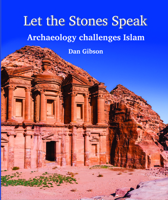
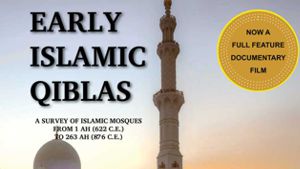

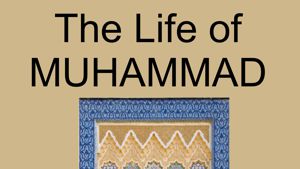
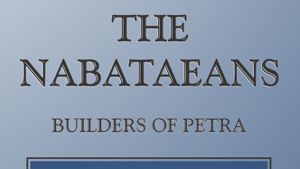



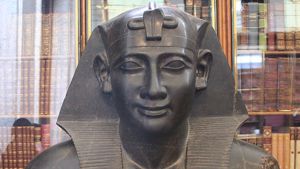
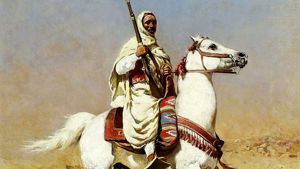

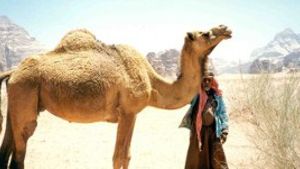
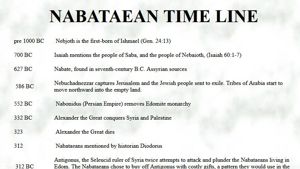

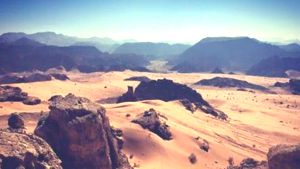

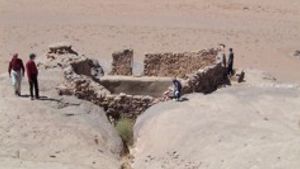
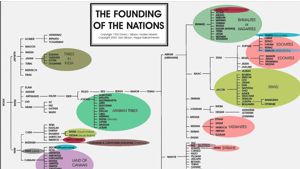
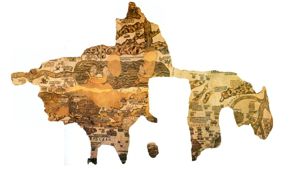
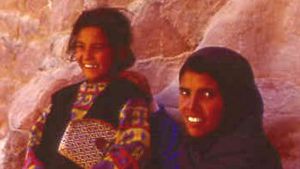
Page Discussion
Membership is required to comment. Membership is free of charge and available to everyone over the age of 16. Just click SignUp, or make a comment below. You will need a user name and a password. The system will automatically send a code to your email address. It should arrive in a few minutes. Enter the code, and you are finished.
Members who post adverts or use inappropriate language or make disrespectful comments will have their membership removed and be barred from the site. By becoming a member you agree to our Terms of Use and our Privacy, Cookies & Ad Policies. Remember that we will never, under any circumstances, sell or give your email address or private information to anyone unless required by law. Please keep your comments on topic. Thanks!